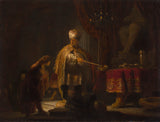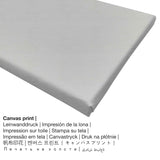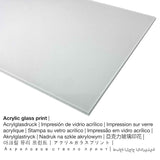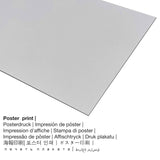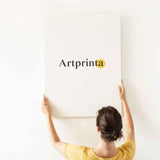Rembrandt van Rijn, 1633 - Daniel na Saịrọs N'ihu arụsị Bel - ọmarịcha nka.
Ụtụ gụnyere. Mbupu gbakọrọ na ndenye ọpụpụ.
Ozi nka site na ngosi nka (© - nke J. Paul Getty Museum dere - Ụlọ ihe ngosi nka nke J. Paul Getty)
When King Cyrus of Persia, seen at the center, asked his confidant Daniel why he does not worship the deity Bel, whose lower half can be seen in the shadows, Daniel replied that he worshipped a living god, not an idol. The king insisted that Bel was a living god and pointed to the offerings of food and wine that Bel consumed every night. Cautiously, Daniel noted that bronze statues do not eat. Cyrus was momentarily bewildered, but the worried faces of the priests in the background confirm that Daniel has exposed their deception. This story of Daniel's dramatic exposure of the king's idol-worship derives from the apocryphal portion of the Book of Daniel. Light illuminates the figures of Cyrus and Daniel, highlighting their dramatic encounter. Rembrandt contrasted the king's grandeur with Daniel's humility. Facing out and gesturing toward the table, the lavishly attired Cyrus appears large and imposing. By contrast, the youthful Daniel seems small, and his posture suggests modesty or submissiveness before his ruler. Rembrandt evoked the exotic mystery of a pagan cult by showing only part of the monumental idol emerging from the flickering lamplight on the right. Inside the shadowy temple, light catches and reflects off the extravagant finery worn by Cyrus and the gold vessels placed atop the velvet tablecloth.
Eziokwu na-adọrọ mmasị gbasara ihe osise a aha ya bụ "Daniel and Cyrus Before the Idol Bel"
N’afọ 1633 nwoke Dutch nka Rembrandt van Rijn mere nka nka "Daniel and Cyrus Before the Idol Bel". The painting was painted with the dimensions of 23,5 × 30,2 cm (9 1/4 × 11 7/8 in). Mmanụ na panel was used by the artist as the medium of the masterpiece. This artpiece can be viewed in in the digital collection of Ụlọ ihe ngosi nka nke J. Paul Getty located in Los Angeles, California, United States of America. With courtesy of: The J. Paul Getty Museum (public domain license).Creditline of the artwork: . The alignment of the digital reproduction is odida obodo na a akụkụ ruru nke 4: 3, nke pụtara na ogologo bụ 33% ogologo karịa obosara. The painter Rembrandt van Rijn was an artist from the Netherlands, whose style was mainly Baroque. The Baroque painter was born in the year 1606 na Leiden ma gafee na afọ nke 63 n'afọ 1669.
Họrọ ngwa ngwaahịa ọkacha mmasị gị
Anyị na-enye ihe dị iche iche dị iche iche na nha maka ngwaahịa ọ bụla. Ya mere, anyị na-enye gị ohere ịhọrọ n'ime nhọrọ ndị a:
- Glass acrylic e biri ebi (nwere ezigbo mkpuchi iko): An print on acrylic glass, often referenced as a plexiglass print, will transform the original work of art into beautiful wall décor.
- Kwaaji: A canvas print, which should not be mistaken with a canvas painting, is a digital replica printed onto cotton canvas fabric. Furthermore, a printed canvas generates a charming and enjoyable atmosphere. How do I hang a canvas on my wall? A canvas print has the advantage of being low in weight. This means, it is easy to hang the Canvas print without the support of extra wall-mounts. Canvas prints are suited for all kinds of walls.
- Poster (akwa akwa akwa): Our poster print is a printed sheet of cotton canvas paper with a nice structure on the surface. Please note, that depending on the size of the canvas poster print we add a white margin of approximately 2-6cm around the artwork, which facilitates the framing.
- Mbipụta nke aluminom: Aluminium Dibond prints are metal prints with an outstanding effect of depth. The Direct Print on Aluminum Dibond is the best start to the sophisticated world of fine art prints manufactured with aluminum. The bright sections of the original work of art shine with a silky gloss but without the glow. The direct print on aluminium is one of the most demanded entry-level products and is an extremely contemporary way to display art prints, since it draws attention on the artwork.
Tebụl nkọwa omenkà
| Aha onye nka: | Rembrandt van Rijn |
| okike nke onye nka: | nwoke |
| Nationality: | Dutch |
| Ọrụ: | onye na-ese ihe |
| Mba onye si: | mba netherland |
| Otu nka: | nna ukwu ochie |
| Ụdị nke onye na-ese ihe: | Baroque |
| Oge ndu: | 63 afọ |
| Afọ ọmụmụ: | 1606 |
| Ebe omuma: | Leiden |
| Nwụrụ n'afọ: | 1669 |
| Ebe ọnwụ: | Amsterdam |
Nkọwa ihe nka
| Akụkụ nka: | "Daniel and Cyrus Before the Idol Bel" |
| Nhazi nka: | sere |
| Okwu mkpokọta: | nka ochie |
| Narị afọ nka: | 17th narị afọ |
| Emepụtara n'afọ: | 1633 |
| Afọ nka: | 380 afọ |
| Usoro nka izizi: | mmanụ na panel |
| Akụkụ izizi nka: | 23,5 × 30,2 cm (9 1/4 × 11 7/8 na) |
| Egosiputara na: | Ụlọ ihe ngosi nka nke J. Paul Getty |
| Ebe ngosi nka: | Los Angeles, California, Njikota Obodo Amerika |
| Weebụsaịtị nke ihe ngosi nka: | Ụlọ ihe ngosi nka nke J. Paul Getty |
| Ụdị ikike nka: | ngalaba ọha |
| Site n'aka: | Ụlọ ihe ngosi nka nke J. Paul Getty |
Nkọwa ngwaahịa ahaziri ahazi
| Nkewa bipụta: | ọrụ mgbidi |
| Mmeputakwa: | dijitalụ mmeputakwa |
| Usoro nhazi: | UV kpọmkwem obibi |
| Mmalite nke ngwaahịa a: | emere na Germany |
| Ụdị ngwaahịa: | a na-achọ |
| Ihe eji eme atụmatụ: | ịchọ mma mgbidi, mkpokọta nka (mmeputakwa) |
| Ndozi onyonyo a: | usoro odida obodo |
| Oke akụkụ: | ogologo: obosara 4:3 |
| Nkọwa nke oke ihe onyonyo: | ogologo bụ 33% ogologo karịa obosara |
| Akwa ngwaahịa dị: | Mbipụta iko acrylic (nke nwere ezigbo mkpuchi iko), mbipụta kanvas, mbipụta ọla (aluminium dibond), mbipụta akwụkwọ mmado (akwụkwọ kwaaji) |
| Nhọrọ nke akwa akwa n'elu etiti ihe ndọtị (mbipụta akwa akwa): | 40x30cm - 16x12", 80x60cm - 31x24", 120x90cm - 47x35", 160x120cm - 63x47" |
| Mpempe iko acrylic (nwere ezigbo mkpuchi iko) nha: | 40x30cm - 16x12", 80x60cm - 31x24", 120x90cm - 47x35", 160x120cm - 63x47" |
| Mpempe akwụkwọ mmado (akwụkwọ kwaaji) nha dị iche iche: | 40x30cm - 16x12", 80x60cm - 31x24", 120x90cm - 47x35" |
| Mbipụta aluminom: | 40x30cm - 16x12", 80x60cm - 31x24", 120x90cm - 47x35" |
| Igwe onyonyo: | agunyeghi |
Ozi dị mkpa: We try in order to describe the products in as much detail as possible and to exhibit them visually. Still, the tone of the printing material, as well as the print result may diverge marginally from the representation on the device's screen. Depending on your screen settings and the nature of the surface, not all colors are printed as realisitcally as the digital version. Because all art reproductions are processed and printed by hand, there might also be minor deviations in the motif's exact position and the size.
© Copyright - Artprinta (www.artprinta.com)

